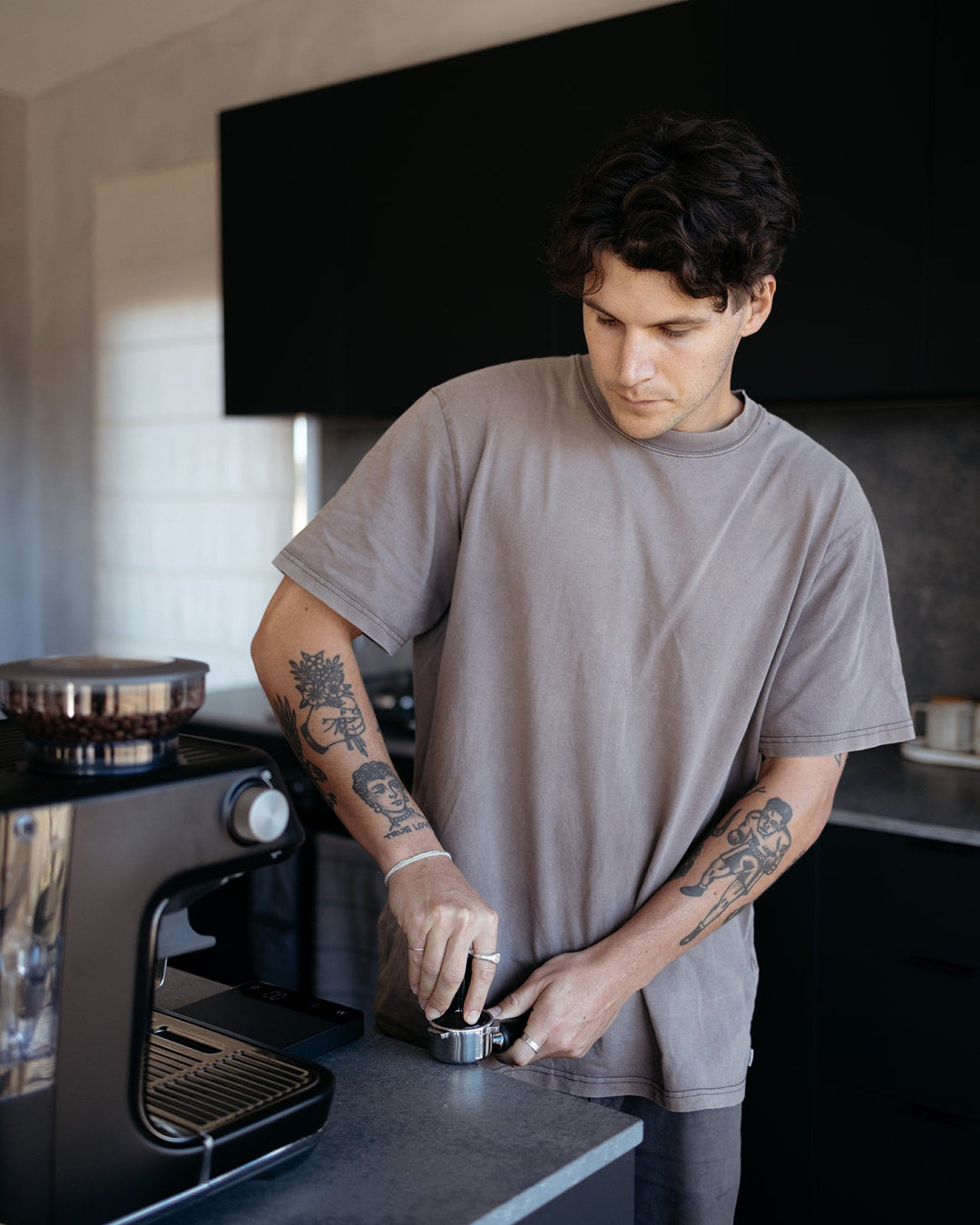Where to Buy Genuine SOE Single Origin Espresso Online
Where to Buy Genuine SOE Single Origin Espresso Online
Blog Article
Coffee Beans 101: Whatever You Required to Find Out About Coffee and Blended Coffee Beans
When it comes to coffee, recognizing the subtleties of espresso and mixed beans can change your daily cup. From the expanding process to toasting techniques, every step plays a role in your coffee experience.
Recognizing Coffee Beans: Varieties and types
When diving into the world of coffee, understanding the types and varieties of coffee beans is crucial for every enthusiast. You'll mainly run into 2 major varieties: Arabica and Robusta. Arabica beans are recognized for their smooth, intricate flavors and lower caffeine material, making them a favorite amongst coffee aficionados. On the other hand, Robusta beans pack a punch with a more powerful, extra bitter taste and greater caffeine levels, usually used in espresso blends.
Within these varieties, you'll find various local ranges, each bringing one-of-a-kind features. For example, Ethiopian Yirgacheffe offers brilliant floral notes, while Colombian beans give a well-balanced flavor profile. As you check out, remember to pay interest to processing techniques like washed or natural, as they can substantially affect the final preference. By familiarizing on your own with these beans and their flavors, you'll elevate your coffee experience and make even more enlightened options in your brewing trip.
The Growing Refine: From Seed to Bean
When you explore the trip of coffee, it all beginnings with seed selection strategies that set the foundation for quality. From there, cultivation and gathering play necessary roles in ensuring the beans prosper. Finally, handling techniques transform those collected cherries into the coffee beans you love.
Seed Selection Strategies
Selecting the right seeds is vital for creating top notch coffee beans, as it lays the structure for the entire growing process. Pay interest to the seed's age and storage space problems, as fresh seeds tend to sprout far better. Think about the illness resistance of various selections, as this can considerably impact your yield.
Cultivation and Harvesting
As you nurture your coffee seeds into prospering plants, recognizing the growing and harvesting process is crucial for achieving the very best flavor and high quality. Beginning by planting your seeds in well-draining dirt, ideally in a shaded area to safeguard them from direct sunlight. As your plants grow, keep consistent wetness, and be mindful of their need for nutrients. Trim consistently to promote air flow and healthy development.
Hand-picking is often the best approach to assure only the ripest cherries are picked. Timing is crucial; collecting too very early or also late can impact the taste profile of your beans.

Handling Techniques Clarified
When you've harvested your coffee cherries, the following essential action is refining them to change those dynamic fruits into the beans you'll brew. In the completely dry procedure, you spread the cherries out in the sunlight to dry, permitting the fruit to ferment and pass on distinct flavors to the beans. Comprehending these approaches is essential to enjoying your coffee experience.
Toasting Strategies: How Taste Is Created
When it concerns toasting coffee beans, comprehending roast degrees is key to revealing their special tastes. Each toasting method impacts the fragrance and improves the taste growth process, providing you a richer coffee experience. Allow's discover just how these variables collaborated to raise your everyday brew.
Roast Degrees Explained
Roast degrees play a vital function fit the taste profile of your coffee. When you select a light roast, you'll take pleasure in bright acidity and fruity notes. As you move to a tool roast, you'll notice an equilibrium of sweetness and intricacy, often highlighting delicious chocolate or caramel tastes. Dark roasts, on the various other hand, deliver vibrant, smoky qualities with much less acidity, making them abundant and robust. Each degree results from various roasting times and temperatures, impacting the beans' chemical composition. By comprehending these levels, you can better pick a coffee that matches your preference choices. Try out various roasts to discover which one resonates with you, boosting your total coffee experience and satisfaction.
Effect on Scent
The roast level not just influences the taste of your coffee yet likewise considerably influences its aroma. When you select a light roast, you'll often notice intense, floral notes that can make your coffee scent dynamic and fresh. As the beans dim, the scent changes; a tool roast highlights extra balanced, caramelized scents, while a dark roast has a tendency to feature bold, great smoky touches. Each roasting technique releases various unstable compounds, forming just how your coffee scents. Additionally, the quality of the beans plays a crucial duty; fresh roasted coffee launches extra aromatic oils, enhancing that tempting scent. So, focus on the roast degree-- it's key to exposing the full aromatic experience of your mixture.
Taste Advancement Process
As you check out the taste growth process, you'll uncover that toasting strategies play a crucial function in forming the taste account of your coffee. The toasting temperature and time directly influence the level of acidity, sweet taste, and anger of the beans. Light roasts keep more of the bean's original flavors, highlighting fruity and flower notes. Medium roasts equilibrium acidity and body, providing a well-shaped flavor. Dark roasts, on the various other hand, bring out strong, smoky characteristics while lessening the bean's fundamental qualities. Throughout roasting, chemical reactions, like the Maillard reaction and caramelization, change the beans and boost their intricacy. Exploring with various roasting degrees can aid you discover your excellent mixture, so don't hesitate to taste and discover the abundant spectrum of flavors!
Coffee vs. Blended Coffee: Key Distinctions
Coffee and blended coffee each offer unique experiences that accommodate various tastes and choices. Coffee is a focused coffee brewed by compeling warm water through finely-ground coffee beans, leading to a rich, strong taste and a luscious layer of crema on the top. It's typically appreciated as a shot or utilized as a base for beverages like cappucinos and coffees.
On the other hand, combined coffee incorporates different beans from different areas, creating a more balanced flavor profile. You'll often find blends that highlight acidity, sweetness, or body, making them functional for different brewing methods. While espresso concentrates on intensity, combined coffee might provide a more comprehensive variety of tastes that can transform with each sip.
Ultimately, your choice between coffee and blended coffee boils down to your personal choice. Whether you crave a leisurely mug or a quick shock, both alternatives have something tasty to provide.

Brewing Approaches: Opening the Perfect Cup
When it involves developing coffee, finding the right technique can transform your experience and boost your cup. Each brewing method has its special charm and can substantially impact your coffee's taste and aroma. Making use of a French press permits you to appreciate a abundant and robust brew, while a pour-over technique supplies a tidy, bright mug with distinctive tastes.
If you favor coffee, purchasing a quality machine can assist you master the art of pulling shots. For ease, SOE a single-serve pod system offers rate without sacrificing taste.
Don't ignore chilly mixture, which delivers a smooth, less acidic coffee ideal for warm days. Trying out different techniques to uncover what reverberates with your taste. Each brewing technique opens a new world of opportunities, so take the time to check out and locate your best cup. Satisfied developing!
Sampling Notes: Identifying Taste Profiles
Exactly how can you truly value your coffee if you don't know what flavors to look for? Tasting notes are your guide to recognizing the intricate globe of coffee. When you sip, take note of the first flavors that hit your palate. You might find fruity notes, like berry or citrus, or perhaps a nutty touch. As you proceed to taste, see exactly how the flavors advance-- this is referred to as the "coating." Some coffees could leave a chocolatey or sugar aftertaste, while others may have an intense, clean coating.
Take into consideration the body of the coffee, as well; is it light and airy or thick and syrupy? Do not forget acidity; an intense acidity can add vigor, while a reduced acidity might give a smoother experience. By recognizing these flavor profiles, you'll deepen your connection with each mug, making coffee tasting a fascinating trip of exploration.

Tips for Selecting and Keeping Coffee Beans
Keeping and choosing coffee beans properly can greatly enhance your brewing experience. Beginning by selecting high-grade beans that fit your preference - SOE.
As soon as you have your beans, keep them in an airtight container to avoid exposure to air, light, and dampness. A dark, trendy area works best, so avoid maintaining them in the fridge or freezer, as this can present dampness. Only grind the amount you need to keep freshness; whole beans maintain flavor longer than pre-ground coffee.
Lastly, attempt to utilize your beans within two to 4 weeks after opening for peak taste. Following these pointers will certainly assure your coffee stays delightful and delicious, boosting your daily mixture to brand-new heights.
Frequently Asked Inquiries
The Length Of Time Do Coffee Beans Stay Fresh After Roasting?
Coffee beans stay fresh for concerning two weeks after roasting - SOE. You should store them in an impermeable container, away from light and wetness. Afterwards, their taste and scent start to reduce substantially

Can I Mix Different Coffee Bean Varieties?
Definitely, you can mix different coffee bean selections! Trying out blends can improve tastes and create an unique taste account. Simply ensure to balance the staminas and characteristics of each variety for the finest results.
What Is the Ideal Grind Dimension for Espresso?
For espresso, you'll desire a fine grind dimension, about the appearance of table salt. This enables perfect extraction, resulting in an abundant, savory shot. Experiment a little bit to find what suits your preference best!
Exactly How Does Elevation Affect Coffee Bean Flavor?
Elevation affects coffee bean flavor by affecting the growth rate and chemical composition. Higher elevations result in slower maturation, which improves acidity and intricacy, providing your coffee a one-of-a-kind and lively preference you won't forget.
Are There Decaffeinated Variations of Coffee Beans?
Yes, there are decaffeinated versions of coffee beans. You can delight in an abundant coffee taste without the caffeine kick. Simply seek "decaf" blends at your regional coffeehouse or specialized shop.
Coffee Beans 101: Whatever You Need to Know Concerning Espresso and Blended Coffee Beans.
When diving into the world of coffee, understanding the types and selections of coffee beans is crucial for every lover.When it comes to roasting coffee beans, recognizing roast degrees is essential to revealing their special tastes. Espresso is a concentrated coffee made by forcing hot water through finely-ground coffee beans, resulting in an abundant, bold taste and a creamy layer of crema on top.On the various other hand, combined coffee incorporates numerous beans from different regions, producing an extra balanced taste account.
Report this page